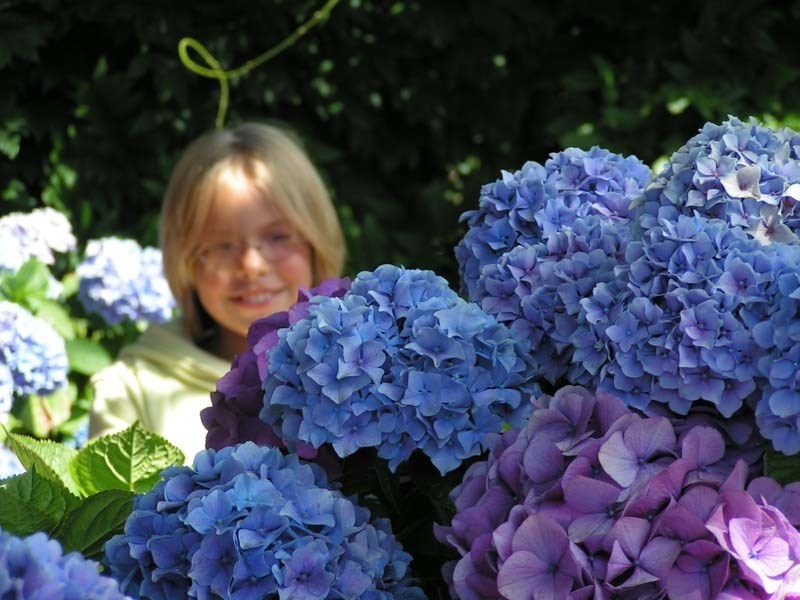This week when crabapple and plum trees are at their fragrant best, it’s hard not to think of fruit-bearing trees. But look past the orchard to find other blooming trees and shrubs that will make a big difference in your garden not just this year, but for many summers to come.
For anyone who loves spring-blooming fruit trees but hates the thought of a bountiful harvest, there are plenty of alternatives so that it’s possible to have a tree or shrub flowering from May right until freeze-up. Though shrubs and trees are an expensive outlay at first, they tend to have a proliferation of blooms, making them cost effective in the long run.
“Most flowering trees have a two-week window when they are in bloom. If you are planning a shrub bed, think of the season as a whole. Consider the season of bloom, determine the space you have to build the bed and what your net goal is, whether it is for shade or whether perhaps it is to have something blossoming,” said Tam Andersen, of Prairie Gardens and Greenhouses.
Andersen advises gardeners to look for extra features such as differently coloured bark or leaves that add to the plant’s beauty and give you more bang for your buck.
When designing a shrub bed consider the season as a whole and try to find plants that are interesting when they are blooming, but also through the summer and perhaps into the winter.
For example, Diabolo Ninebark has burgundy/purple coloured leaves and produces clusters of white fuzzy-looking blooms in mid-summer. The bark is interesting even in the winter and contrasts nicely with a lime-green variety of ninebark. When mature it’s three to four metres tall.
Landscaping is most pleasing when the height is considered by thirds. For example, in a kidney-shaped bed, you might have a six-metre tall tree, such as a Thunderchild Crab, with purple foliage. Put it at one end of the shrub bed and at the opposite end, plant a two-metre high double-flowering plum. In the middle, you might plant Magic Carpet Spirea, which is about 50 centimetres high and has coppery red foliage.
Another tree that does double duty is the Amur Maacki. When mature, this interesting tree will be six metres tall by nine metres wide and it has unusual copper-coloured bark, with green undertones.
“It’s a member of the legume family, which is the same family as peas and to me, it looks exotic, like the trees from the savannahs of Africa. It has gorgeous 12-inch long blooms that are very like pea blooms and it never needs fertilizing because like peas, it fixes its own nitrogen in the soil. It produces a two- to three-inch long pod that is inedible but interesting to see. The bark is shiny, as if it’s been varnished,” Andersen said.
Two lilac bushes to look for are Sensation, which has wine-purple coloured blooms with a white frill and the Japanese Tree Lilac, which blooms later in July.
“So you can extend the lilac blooming season from June into the summer. The Japanese Tree lilac has cherry-red bark so it’s interesting even when it’s not blooming,” Andersen said.
Two interesting metre-high shrubs include weigela and mock orange. Both come in a wide variety of colours and often include contrasting variegated foliage.
New varieties this year at Hole’s Greenhouses include Weigela Sonic Bloom Red, which features red flowers with a starburst of pink stamen in the centre. Sonic Bloom is supposed to bloom twice per summer. Philadelphus Starbright Mock Orange is unusual because it has purple foliage with white/mauve flowers.
Hydrangeas have twice the flower impact because if you deadhead them, they produce big softball-sized blooms all summer long. Depending upon the variety, the blooms may be spherical or conical in shape.
“The shrubs range from one metre to three metres in height and may be blue, pink, yellow or white. There’s even one that’s lime,” said Tam Morin, garden centre manager at Canadian Tire.
Hydrangeas are interesting in that the bloom colour changes depending upon how acidic the soil is.
“Hydrangeas act like litmus paper. For example, Endless Summer Hydrangeas will be blue if the soil is more acidic, so if you want that colour, heap peat moss around the roots. They will be pink if the soil is alkaline,” Andersen said.
If you’re looking for something yellow in the garden, try the new shrub rose from the Morden Greenhouses this year called Rosa Campfire, which is available at Hole’s Greenhouses. This hardy rose is tri-coloured and will bloom from June until freeze-up. It looks like a true rose with a yellow centre and an outer petal that is pink but turns red as the flower ripens.
A nice complement in the garden would be Morden Sunrise, which is a beautiful, flatter-looking rose with yellow petals that deepen to a burnt-orange colour as the flowers age. Both roses are about a metre tall and one metre wide.




